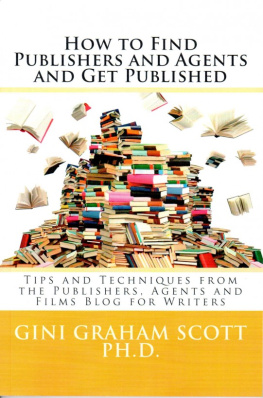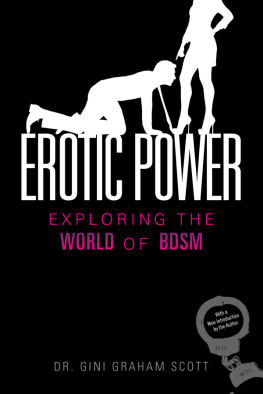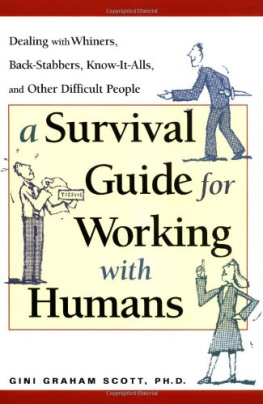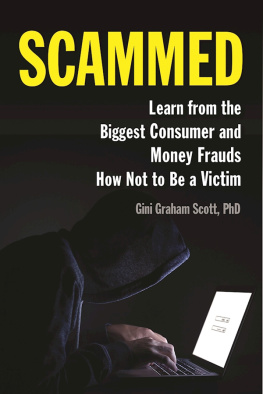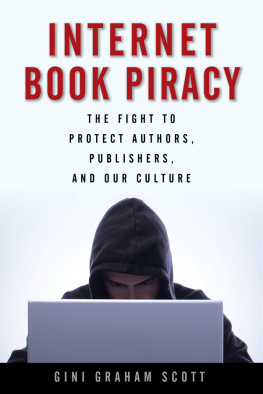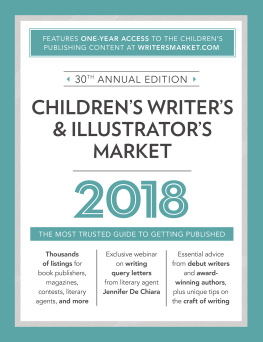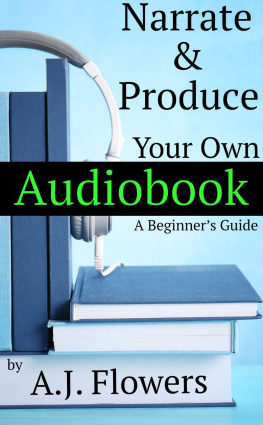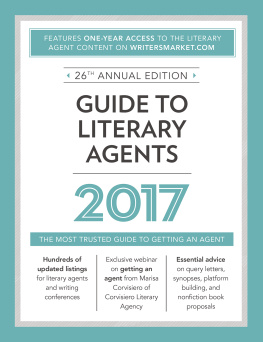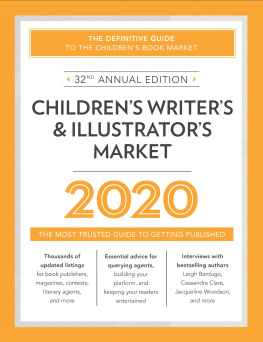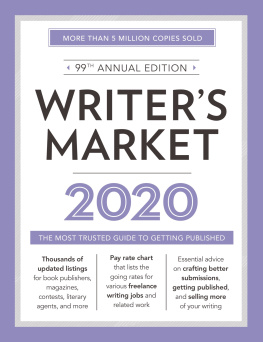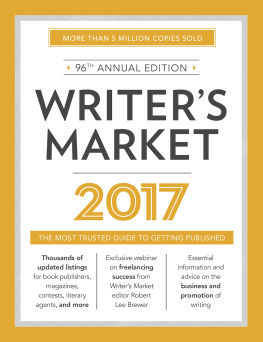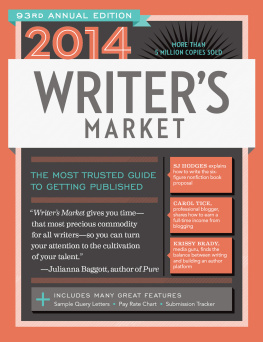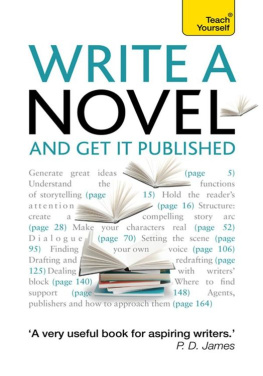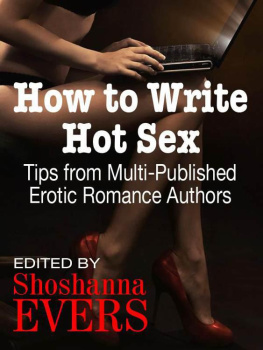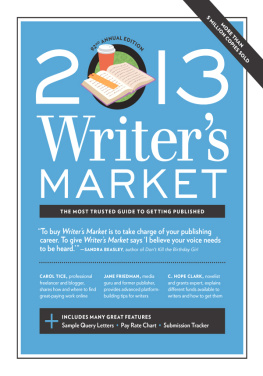How to Find Publishers and Agents and GetPublished
Tips and Techniques from the Publishers, Agents andFilms Blog for Writers
By Gini Graham Scott
Changemakers Publishing & Writing
3527 Mt. Diablo Blvd., #273 . Lafayette, CA94549
www.changemakerspublishingandwriting.com
How to Find Publishers and Agents and GetPublished
Published by Gini Graham Scott at Smashwords
Copyright 2015 by Gini Graham Scott
All rights reserved. No part of this book may beused or reproduced by any means, graphic, electronic, ormechanical, including photocopying, recording, taping or by anyinformation storage retrieval system without the written permissionof the author except in the case of brief quotations embodied incritical articles and reviews.
Table of Contents
Gini Graham Scott haspublished over 50 books with mainstream publishers, focusing onsocial trends, work and business relationships, and personal andprofessional development. Some of these books include The Very NextNew Thing, The Talk Show Revolution, The Privacy Revolution. TheBattle for Personal Privacy, and Fantasy Worlds.
She has gained extensive media interest forprevious books, including appearances on Good Morning America,Oprah, Montel Williams, CNN, and hundreds of radio interviews. Shehas frequently been quoted by the media and has set up websites topromote her most recent books, featured at www.ginigrahamscott.com and www.changemakerspublishingandwriting.com .As of this writing, she has about 100,000 listings in Google SearchResults.
She has become a regular Huffington Post bloggersince December 2012, and has a Facebook page featuring her booksand films at www.facebook.com/changemakerspublishing .
She has written, produced, and sometimesdirected over 60 short videos, which are featured on herChangemakers Productions website at www.changemakersproductions.comand on YouTube at www.youtube.com/changemakersprod .
Her screenplays, mostly in the drama, crime,legal thriller, and sci-fi genres, include several that considerthe social implications of science and technological breakthroughsand changes in society, including The New Child, New Identity, DeadNo More, Tax Revolt, and The Suicide Party. All of these are indevelopment with trailers, business plans, and interested directorsand talent.
She has a PhD in sociology from U.C. Berkeleyand MAs in anthropology, pop culture and lifestyles, recreation andtourism, and organizational/consumer/audience behavior from CalState, East Bay. She is getting an MA in communications in June2016.
She is also the Creative Director of Publishers,Agents and Films ( www.publishersagentsandfilms.com ),a service which connections writers to publishers, agents, and thefilm industry.
Her feature film, SUICIDE PARTY: SAVE DAVE,which she wrote and executive produced, is being released in thesummer of 2015. Details are at www.suicidepartyfilm.com .
This book began as a seriesof blogs for The Publishing Connection about how to successfullywrite, strategize how to pitch a book, write a query letter,promote a book, and build a platform. Many of these blogs startedoff as answers to questions from clients or prospective clients,and then I began thinking about all the steps involved from writinga book to getting published.
The result is the first is a series of booksdirected to writers, primarily those new to pitching books andgetting published, although previously published writers canbenefit from some chapters, too.
The book is divided into five parts:
- Writing Your Book: how to write your book,including increasing your creativity, looking to your personalexperiences for ideas, expanding blogs or articles into books, andediting and polishing your book;
- Pitching Your Book: how to determine whetherto find a publisher or agent or self-publish, the pros and cons ofworking with a small or large publisher, and how to choose whatpublisher or agent to work with;
- Sending Query Letters: how to write a goodquery letter to interest an agent, publisher, of producer in yourbook or script;
- Promoting Your Book: how to build yourplatform and promote your book;
- Problems with Publishers: how to deal withproblem publishers who dont pay you.
The blogs that have become chapters in this bookare drawn from my over 30 years of experience in writing, pitching,promoting, and publishing books for myself and for clients; writingand sending out queries to pitch books and scripts for over 1000clients; and working with dozens of publishers, agents, and filmproducers along the way.
I hope you will find this book helpful and Iwish you the best of luck in getting published, and in some cases,turning your book into a film.
People have often asked me,how have you been able to write so much, citing the more than 50books and over 20 feature scripts I have written? The answer liesin cultivating your creativity, so you can more quickly come upwith ideas, select among them to choose the best ones, and thendevelop and polish them into the final article, book, orscript.
To this end, I have used a variety of techniquesfor increasing creativity, which anyone can learn and practiceuntil they become second nature. It is important to make thesetechniques a regular practice, so you dont have to think aboutthem and simply apply them as needed. When this occurs, thetechniques essentially become an intuitive part of you anautomatic response whereby you can generate a lot of new ideas andsense which is right to follow up on, through a kind of innerwisdom or knowing.
For me, the process of developing my intuitiveinner creativity began when I took a workshop on tapping into onesintuition or knowing in the late 1960s after I first came toCalifornia. In the workshop, we did a visualization in which weimagined a swirl of energy bubbling up from the ground into ourbodies and then imagined another code of energy pouring in throughour head. Then, we were told to imagine the two energy streams fromthe earth, which provided grounding, and from the air, whichprovided expansion, meeting in the middle of our bodies andstreaming out into whatever project we were working on to infuse itwith this energy. In my case, I imagined the energy pouring out ofmy hands as I rushed to the typewriter yes, we once usedtypewriters in the pre-computer days and began to write. Soinitially, that was the image I brought to my typewriter each dayas I worked on writing something, and after a while, I didnt needto see the image anymore. I would just go to the typewriter andwrite an approach I continued to use no matter what technology Iused for writing from typing and handwriting to writing on acomputer keyboard.
Another thing I learned early on is the secretof separating the creative process from the editing process. Inother words, you just write whatever you are thinking about yoursubject initially, so you get whatever you want to say down anddont interrupt the flow of ideas. Then, you go back and reviewyour writing as an editor and do a final edit and polish.Importantly, you dont try to mix the two processes, or you willslow yourself down. If you are writing for someone else, it isimportant to explain this process, if you are showing them yourfirst draft to get their input. This way, they understand thatthere may be numerous typos and grammatical errors because of thisinitial creative process, but you will correct any errors when youdo the final polish.
Initially, when I started writing anything, Iused an outline, which I either prepared or an editor or clientgave to me. But after a while, I found I generally didnt need awritten outline, since it would automatically be there in my mind,and that increased the speed of the creative process even more.Likewise, as you work with these techniques, you will find thatmany things you doing rationally at first will become part of theintuitive you, so you can come up with ideas and write even morequickly.

